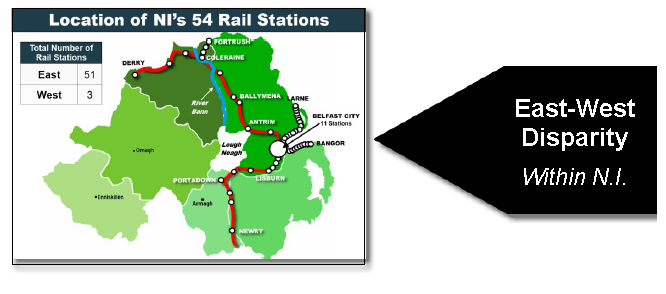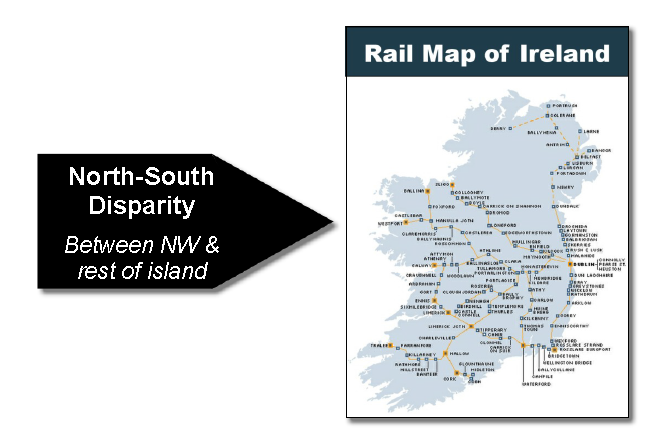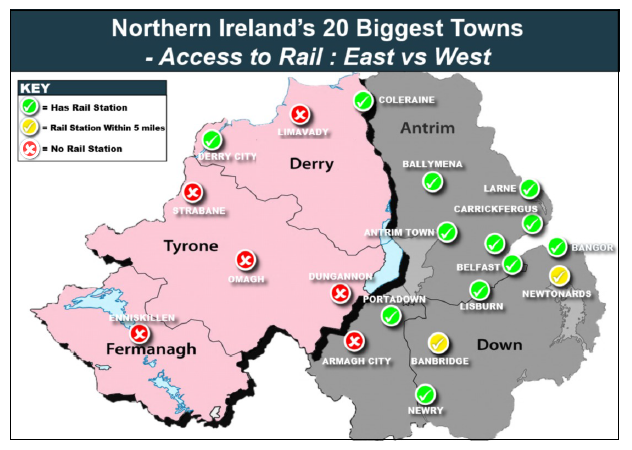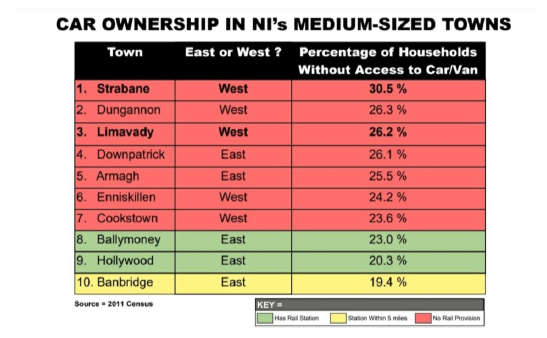Negative legacy of closures
• Isolated from the island’s transport networks, the four counties in Ireland’s north-western corner have under- performed since – economically, demographically and in tourism.
• At a time of significant predicted population growth on the island, Derry is projected to be the only city that will decline in size over the next 15 years.
• Donegal was one of only three counties in ROI that registered a fall in population at the last census (i.e. in 2016 vs 2011).

Disparity in rail provision
While all areas of Ireland and Britain suffered rail cuts last century as a result of the growth of the private motor car, the cuts suffered in West Ulster were by far the deepest. This was exacerbated by partition and unsympathetic policies in Stormont, whose total abandonment of railway in 2 Northern counties led to the abandoment of railway in 3 Southern counties which were no longer sustainable.

As a result, the west of NI and the North-West of the island face two significant disparities in rail service provision, an East West disparity in Northern Ireland and a North South disparity on the island of Ireland.

The effect of this can be quite easily seen in the rail map of Ireland, where the border is clearly visible by the absence of rail. It is notable that the only counties in Ireland with no railways are all located in Ulster. Fermanagh, and the four counties that border it, have no rail. Fermanagh is thus the centre for lack of rail provision in Ireland.
• The three western continues of NI contain almost 30% of NI’s population, yet only 6% of its rail infrastructure (& less than 2% of its motorways).
• Six of NI’s 20 largest towns and cities have no access to rail. All but one of those towns is located in the west. The Mid Ulster towns of Cookstown and Magherafelt are just outside the list and also have no rail.

Regional imbalance
The lack of a rail network in these counties is mirrored by lack of motorway provision. The counties with the worst public transport also have the worst road network.

Ironically, the towns with no rail provision also have the the lowest levels of car ownership.

This transport disadvantage results in difficulties in accessing key services and social exclusion.
